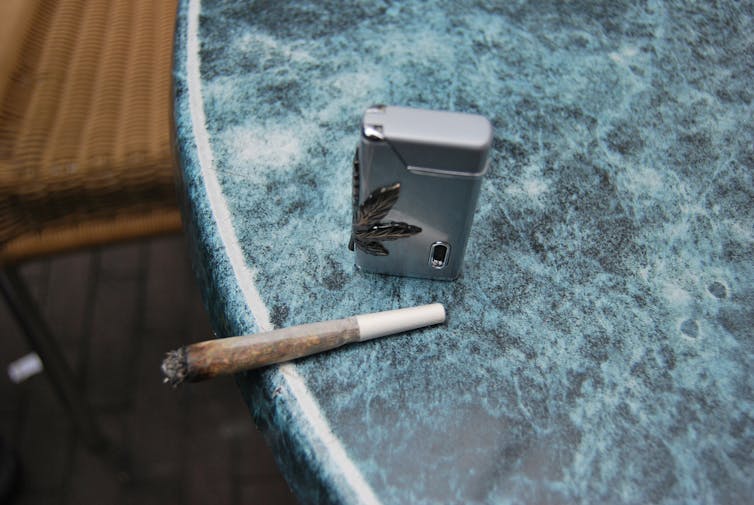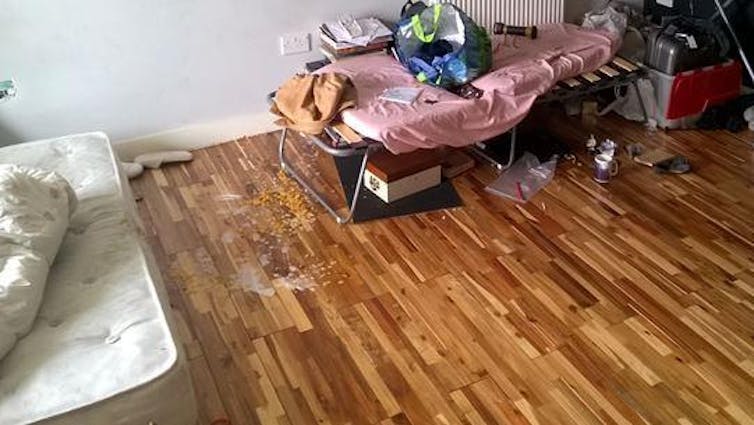
Grace Robinson, Edge Hill University; James Densley, Metropolitan State University , and Robert McLean, Northumbria University, Newcastle
“County lines” is a term used by the police to describe a growing practice among criminal gangs: when demand for drugs fails to meet the supply in major cities, gangs travel to remote rural areas, market towns or coastal locations in search of new customers.
The process – referred to as “going cunch” (country) or “going OT” (out there) by those involved – has initiated ugly forms of exploitation. Children as young as 12 are hired as “runners” to transport and sell illicit drugs, while the homes of vulnerable adults are occupied without permission to create a base to sell from – a practice also known as “cuckooing”.
Tackling county lines is now a national priority: the government has launched a new £3.6m National County Lines Coordination Centre, made up of experts from the National Crime Agency. The centre aims to measure the threat of county lines, focus resources on the most serious offenders and work closely with partners in health, welfare and education to reduce the harms associated with the practice.
For our latest research, published in the International Journal of Offender Therapy and Comparative Criminology, we spoke with members of organised crime groups, police, staff on youth offending teams and young people aged between 14 and 17 involved in drugs gangs in Glasgow, Scotland and Merseyside, England, to find out what leads them to get involved in this practice, and how it affects their lives.
Working the lines
Before gangs started using the county lines model, class A drugs such as heroin and crack cocaine were typically supplied in remote areas by user-dealers who would sell to locals from their own supply. Competition in these areas was low, and violence was kept to a minimum.
Read more:
Not all drug dealers are the same – it’s time to ditch outdated stereotypes
But in recent years, gangs have been using experience gained in the big cities to enter into smaller, satellite areas with high demand, good profit margins and low police presence. They are leveraging violent reputations earned in the big cities to intimidate and dominate existing players in the illegal drugs market. Police in picturesque county towns such as Shrewsbury (a town of about 70,000 people close to the Welsh border in Western England) are now dealing with turf wars and homicides.

During our research, we found that one of the root causes of this problem is how normal it is among teenagers to use cannabis – and the monetary cost of this. Young people in our study began smoking weed recreationally with their friends as young as 13. Perhaps more significant than the psychological and physical effects of cannabis use, which are heightened around the time of puberty, was the fact that weed cost money that these adolescents did not have.
The majority of county lines workers we interviewed in Merseyside owed money to a drug dealer. They accrued debt by having their drugs “on tick” – a slang term for a “buy now, pay later” scheme. When they failed to pay, the indebted were forced into working for their dealers. Working the lines meant being deployed anywhere at any time, answering the phone without delay when their masters (or clients) called, and leaving their post only to meet paying customers.
Debt bondage wasn’t the only way people ended up working the lines. Some of our interviewees in Glasgow entered the trade by their own volition. They were willing to travel and simply asked known drug dealers for a job. Owing to boredom, poverty and a sense of hopelessness about their legitimate job prospects, these young people felt they had no choice but to sell drugs.
The experiences of young people who had made a choice (albeit a constrained one) to “go country” didn’t fully concur with the horror stories about the practice portrayed by the media. During their interviews, some young people recalled their experiences as “funny”, especially when they spoke of the exploitative relationships they had formed with vulnerable drug users.

Removing root causes
Our findings expose a paradox at the heart of county lines – the exploited and the exploiters are often one and the same. Drug dealers, drug runners and drug users form a hierarchical structure, with the most vulnerable – the users – at the bottom. Drug runners look down on drug addicts to make themselves feel better about their own station.
County lines expose that drug prohibition is not working: current laws neither effectively prevent young people from selling drugs, nor protect the most vulnerable in society from consuming them. Positive initiatives such as the National County Lines Coordination Centre are necessary for sharing intelligence between police and social service providers, but constrained by the folly of existing drug policy.
Our research highlights that a criminal justice approach based on tough enforcement and recovering the proceeds of crime is not enough to dissuade dealers from dealing. Unless we tackle demand for illicit drugs, and the root causes of gang culture – namely social and economic marginalisation – county lines will continue to be drawn.![]()
Grace Robinson, PhD Candidate and Graduate Teaching Assistant, Edge Hill University; James Densley, Associate Professor of Criminal Justice, Metropolitan State University , and Robert McLean, Lecturer in Criminology, Northumbria University, Newcastle
This article is republished from The Conversation under a Creative Commons license. Read the original article.
